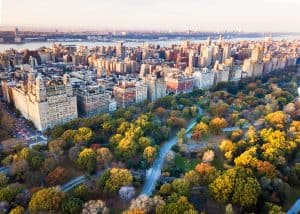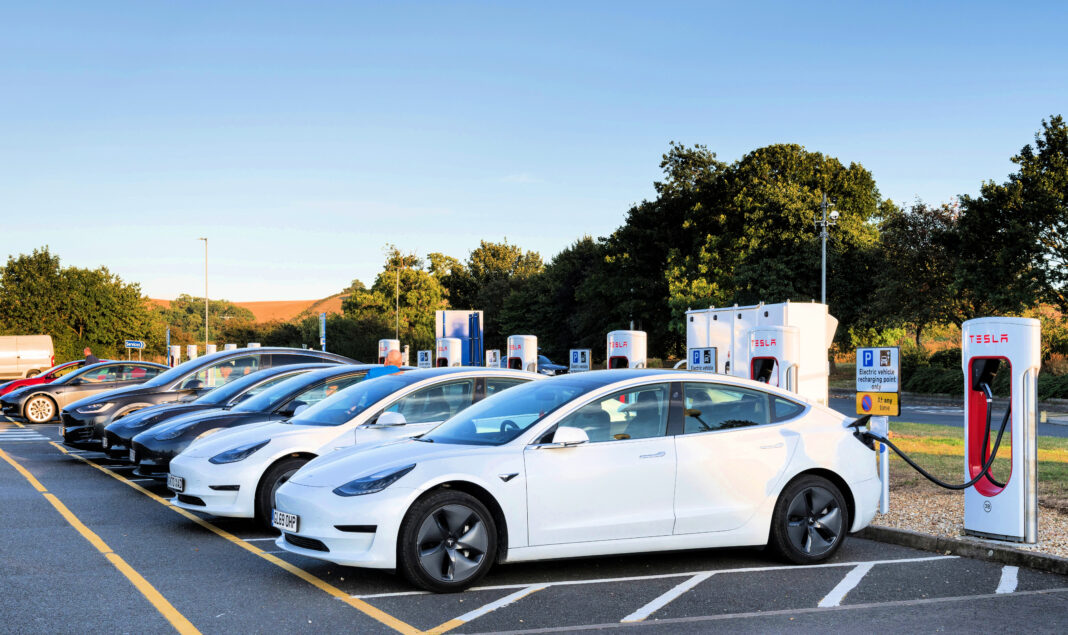GREEN Tech for Healthy Air
10 Technologies Improving Air Quality in Cities
by Jane Marsh
Cities are the heart of every global region. They house generations of families, are often headquarters for the world’s biggest companies, and provide universities that produce the most innovative minds. It’s no wonder why so many people throughout the world want to live in a city.
However, an increase in city residents also creates additional air pollution that harms everyone’s health. These are some of the technologies improving air quality in cities to make them better places to live and work.
1. Electric Vehicles
 Many people sell their cars when they move to a populated downtown area, but everyone will still require some kind of vehicle for transportation.
Many people sell their cars when they move to a populated downtown area, but everyone will still require some kind of vehicle for transportation.
Whether you take a conventionally fueled (fossil fuel-based) bus or drive yourself around the city in a vehicle with an internal combustion engine (ICE), the transportation method will burn gas and create greenhouse gas emissions (GHGs) that intensify global warming. ICE vehicles also create many other forms of pollution that adversely affect public health and the environment.
The number of electric vehicle (EV) models available on the global market keeps increasing each year. More people will have access to vehicles with electric motors that eliminate tailpipe emissions and therefore tailpipe pollution; and which prevent GHGs from entering the planet's atmosphere.
2. Vehicles Designed for Hydrogen Fuel
In addition to EVs, engineers, scientists, and vehicle manufacturers are also developing vehicle motors powered by hydrogen gas. Hydrogen doesn’t create carbon dioxide or harmful emissions when burned, so it would be a 100% clean energy alternative.
Hydrogen fuel cell electric vehicles (FCEVs) produce no tailpipe emissions (other than water vapor), and FCEVs are more efficient than conventional ICE vehicles. The U.S. Department of Energy is leading research to make FCEVs safe, affordable, and environmentally friendly vehicle options.
3. Rentable Electric Bikes
Bicycles are another alternative sustainable technology for transportation purposes. Many cities pave their roads with bike lanes included, and some cities even rent out e-bikes and other electric micro-mobility devices (e-scooters, e-skateboards, etc...) to increase sustainable transit options.
Publicly available or rentable bikes will get people across the few blocks they need to travel without burning fossil fuels. It’s a pollution-free form of transportation that immediately makes the surrounding air safer to breathe.
4. Personalized HVAC Systems
Urban airborne pollution also involves everyone’s homes. Every ounce of air in your home can contain up to 40,000 dust mites or more if the house isn’t clean.
It’s so important to tailor your HVAC unit to your household because some families breathe more air pollutants than others. Getting professional advice will point you toward the most suitable air filters and a cleaning schedule that will make your system last longer.
5. Construction Site Filtration Machines
Research shows that 23% of urban air pollution originates from ongoing construction projects. This is an especially pressing concern in cities because there’s always ongoing construction.
Massive filtration machines at technologically advanced sites pull air through filters during the workday and push out clean air for workers to breathe. They remove dust and other contaminants that people might breathe while working on the site or walking past.
6. Air Quality Sensors
Sometimes city air is safer to breathe than others, so people can check websites or apps to see the current pollution level where they live. Numerous cities installed air sensors to provide accurate instant readings.
Chicago installed their sensors on lampposts in 2014 to track four common pollutants like carbon dioxide and particulate matter. The chips will upgrade to add volatile organic compounds (VOCs) when the technology is available. The ability to upgrade without reinstalling new technologies is one of the many benefits of using emerging tech to improve air quality in cities.
7. Wet Deposition Sprinklers
When it rains or snows over a big city, the water particles capture air pollutants and chemicals before bringing them down to earth. Longer periods of rain in one place capture more pollution, but rain systems have varying lengths and move through regions quickly.
Wet deposition sprinklers recreate this helpful process by operating as long as people need. They’re especially helpful in areas with high amounts of airborne pollution.
8. Biomass Household Stoves
The World Health Organization (WHO) estimates 2.6 billion people cook with kerosene, which puts them at risk of inhaling fatal gases. It’s most common in developing countries, but biomass fuel is an easily accessible alternative. It contains naturally degradable compounds like wood, farming waste, and animal dung. People can access all three components where they live and make the fuel at home.
There is a concern for anyone using biomass stoves long-term. Although the fuel doesn’t create carbon monoxide, it can release carbon dioxide fumes that are poisonous in spaces that lack ventilation. Air cleaning technologies will continue to develop and meet people where they live in these regions.
9. Pollution-Vacuuming Pods
Cities with massive highway infrastructure put more focus on airborne pollutants created by vehicles. Many have set up pollution-vacuuming pods that sit under each road in response to that. Pipework connects the pod to the upper street and sucks in air to remove ozone, hydrocarbons, and carbon monoxide.
It’s another new technology that makes city air safer to breathe, especially for pedestrians walking along high-traffic streets.
10. Self-Cleaning Structural Concrete
Concrete buildings are fire-proof and withstand extreme weather, so they’re an optimal urban construction solution. They’re an even better choice when construction teams use self-cleaning concrete to cover the outer walls and roof. It uses photocatalysis to break down pollutants with sunlight redirected off the concrete.
Because this technology can also create urban necessities like parking decks and sidewalks, it’s a widespread pollution solution.
Urban leadership and residents should adopt technologies that improve air quality in cities, such as sustainable transit alternatives and household upgrades. Sustainable technologies make a significant difference in reducing airborne pollutants that harm city residents and the planet.
Author bio:
Jane works as an environmental and energy writer. She is also the founder and editor-in-chief of

Additional "technologies" that vastly improve urban air quality are the ancient "technologies" of planting trees and maintaining green spaces - as described in the Green Urban Planning article on GCT. Here's an excerpt from the Green City Times' Urban Planning article:
"Urban roads should feature natural landscapes nearby; thus increasing the positive environmental influence of nature on public health. Trees and green spaces serve to create healthier air by filtering urban pollutants, in addition to providing aesthetic value and numerous other benefits.
Planting trees and other greenery in cities also cool urban environments (as well as other smart urban growth solutions like green and cool roofs), helping to reduce the heat island effect in cities." [QUOTE FROM - greencitytimes.com/urban-planning]
